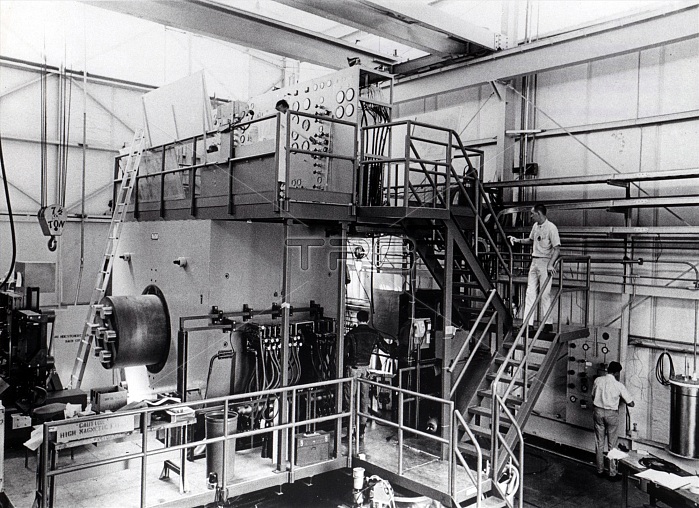
40 inch liquid hydrogen bubble chamber at the Stanford Linear Accelerator, 1968. A bubble chamber is a vessel filled with a superheated transparent liquid (most often liquid hydrogen) used to detect electrically charged particles moving through it. The bubble chamber is similar to a cloud chamber, both in application and in basic principle. It is normally made by filling a large cylinder with a liquid heated to just below its boiling point. As particles enter the chamber, a piston suddenly decreases its pressure, and the liquid enters into a superheated, metastable phase. Charged particles create an ionization track, around which the liquid vaporizes, forming microscopic bubbles. Bubble density around a track is proportional to a particle's energy loss. Bubbles grow in size as the chamber expands, until they are large enough to be seen or photographed. SLAC National Accelerator Laboratory, originally named Stanford Linear Accelerator Center, is a U.S. Department of Energy National Laboratory operated by Stanford University under the programmatic direction of the U.S. Department of Energy Office of Science and located in Menlo Park, California. The SLAC research program centers on experimental and theoretical research in elementary particle physics using electron beams and a broad program of research in atomic and solid-state physics, chemistry, biology, and medicine using synchrotron radiation.
| px | px | dpi | = | cm | x | cm | = | MB |
Details
Creative#:
TOP22170538
Source:
達志影像
Authorization Type:
RM
Release Information:
須由TPG 完整授權
Model Release:
N/A
Property Release:
No
Right to Privacy:
No
Same folder images:

 Loading
Loading